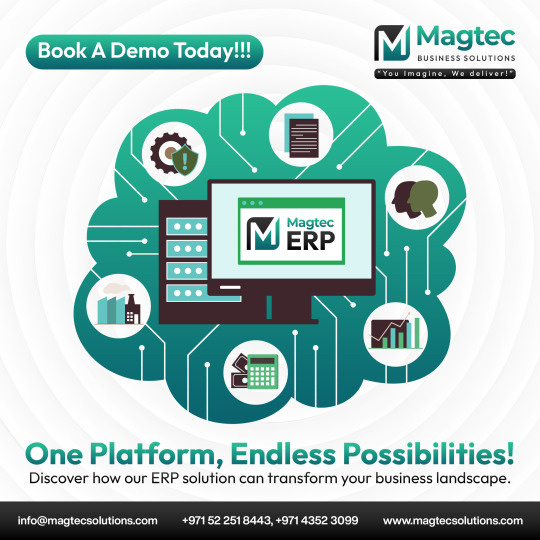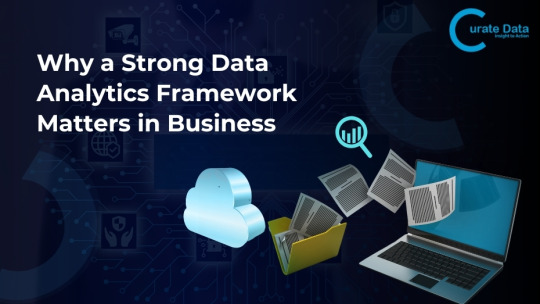#data and analytics strategy
Explore tagged Tumblr posts
Text
Explore top-tier data strategy consulting with Innovatics. Our tailored solutions empower businesses to thrive in the data-driven landscape. Connect us Today
#Data Strategy#data strategy consulting#data science services#strategy consulting services#enterprise data strategy#data and analytics strategy#data strategy examples#data strategy roadmap#data strategy services
0 notes
Text
#ai solutions#ai consulting company#data analytics#data analytics services#ecommerce#ai#digital innovation#data#it consulting company#it services#data and analytics strategy#data visualization#ai consulting company#ai consulting#digital transformation#ai consulting in usa#ai consulting in south africa#business consulting
0 notes
Text
Crafting a Data Analytics Strategy for Informed Decision-Making
Explore the vital elements of a robust data analytics strategy in our latest blog post. Discover how data-driven insights can empower your decision-making processes and drive business success. Learn from industry experts at SG Analytics as they share valuable tips and best practices for leveraging data analytics to make informed decisions. Whether you're new to data analytics or a seasoned pro, this article has something for everyone looking to harness the power of data for strategic advantage.
0 notes
Text

Transform your business with Magtec ERP! 🌐✨ Discover endless possibilities on a single platform. Book a demo today and see how we can elevate your operations to the next level! 🚀📈
#magtec#magtecerp#magtecsolutions#erp#businesssolutions#digitaltransformation#innovation#technology#growth#efficiency#productivity#cloud#automation#management#software#enterprise#success#analytics#customization#scalability#integration#teamwork#collaboration#strategy#data#support#consulting#businessdevelopment#transformation#leadership
4 notes
·
View notes
Text
Trading is about timing. If you don’t understand what cycle the market is in, when to identify manipulation and when to target that manipulation - you’re never going to see this setup.
Each previous market session gives us vital clues on what we’re looking for and when to look for it.
For more join us .
#forex#forex education#forex expert advisor#forex indicators#forexmentor#forex broker#forex market#forexsignals#forexmastery#crypto#learn forex trading in jaipur#jaipur#forex jaipur#rajasthan#learn forex trading#intradaytrading#market strategy#technical analysis#data analytics#analysis
2 notes
·
View notes
Text
youtube
#digital marketing#@desmondjohnson183#marketing strategy#DeepSeek AI#digital marketing AI#open-source AI#AI in marketing#AI-driven content creation#predictive marketing#AI chatbots#AI-powered advertising#voice search optimization#influencer marketing AI#ethical AI#data analytics#AI customer engagement#AI-powered SEO#future of digital marketing.#Youtube
3 notes
·
View notes
Text
Ultimate Guide to DeepSeek AI for Business Growth
Table of Contents of DeepSeek AI for Business Growth1. Introduction: Why AI is Essential for Modern Business Growth2. What Is DeepSeek AI?3. Top 5 DeepSeek AI Tools for Scaling Businesses3.1 Demand Forecasting Engine3.2 Customer Lifetime Value (CLV) Predictor3.3 Automated Supply Chain Optimizer3.4 Dynamic Pricing Module3.5 Sentiment Analysis Hub4. How DeepSeek AI Reduces Costs and Boosts…
#AI automation 2024#AI budgeting#AI business growth#AI for non-tech teams#AI for startups#AI implementation guide#AI in retail#AI supply chain#Business Intelligence#cost reduction strategies#data-driven decisions#DeepSeek AI#enterprise AI adoption#fintech AI solutions#generative AI for business#Predictive Analytics#ROI optimization#scaling with AI#SME AI tools#startup scaling
2 notes
·
View notes
Text
🚀 Meta's New Ad Tools for Facebook & Instagram Are Here! 🎯

Meta just released exciting updates to its ad platforms, aimed at making your campaigns smarter and more effective. Here's a quick look at what’s new and why it matters:
1️⃣ Smarter Targeting with AI: Meta's AI-powered optimization helps you polish your ad targeting. Whether you're customizing ads for different audiences or adjusting campaigns, these tools are designed to reach the right people more efficiently.
2️⃣ New Incremental Attribution Model: This new attribution setting targets those who are more likely to convert after seeing your ad—customers who wouldn’t have taken action otherwise. Early tests show an average 20% increase in incremental conversions, ensuring your ads have a real impact.
3️⃣ Better Analytics Integration: Meta is simplifying connections with external analytics tools like Google Analytics and Adobe, providing a clearer view of how your campaigns perform across platforms. Now, you can track and understand the full customer journey, from paid social to SEO, all in one place.
✨ Key Features :
- Conversion Value Rules: Prioritize high-value customers without creating separate campaigns. Adjust your bids for different customer actions based on long-term value, so you can place higher bids on customers who offer more value over time—all within the same campaign.
- Incremental Attribution: Focus on “incremental conversions”—customers who wouldn’t have converted without seeing your ad. Early adopters have seen a 20% rise in these valuable conversions.
- Cross-Platform Analytics: Meta’s direct connections with analytics platforms allow you to merge data from different channels, giving you a holistic view of your ad performance. Early tests show a 30% increase in conversions when third-party analytics tools like Google Analytics are used alongside Meta ads.
These updates are about improving the precision and efficiency of your ad campaigns. Meta’s new AI-driven features help you achieve better results, make smarter decisions, and maximize the value of your ad spend.
💡 What to Do Now :
✔️ Review your current Meta ad strategy to ensure you're ready to take advantage of these tools.
✔️ Map out your customer journey to identify where these new features can add the most value.
✔️ Be prepared to test these updates as they roll out—early adopters are already seeing impressive gains.
How do you plan to use these new Meta tools? Share your thoughts in the comments below! 💬
📌Follow us on Social Media📌
📢 LinkedIn — Vedang Kadia — Amazon Associate | LinkedIn
📢 Quora — Vedang Kadia
📢 Tumblr — Untitled
📢 Medium — Vedang Kadia — Medium
#digital marketing#social media marketing#facebook ads#instagram ads#adtech#facebook meta#artificial intelligence#data analytics#google analytics#seo services#tumbler#search engine optimization#marketing strategy#tech news#openai#india#chatgpt
4 notes
·
View notes
Text
From Chaos to Clarity: The Importance of Streamlining Your Data Management Strategy
In the blog post "Streamlining Data Management Strategy," SG Analytics emphasizes the importance of a robust data management strategy in today's digital landscape. The article discusses the challenges posed by the explosion of data, such as data silos, security risks, and quality issues. The post provides a step-by-step guide to assess the current data landscape and implement a streamlined data management approach to harness the full potential of data assets. Read more : https://www.sganalytics.com/blog/streamlining-data-management-strategy/

3 notes
·
View notes
Text
What is Digital Marketing?
The term "Digital Marketing" is the practice of promoting goods, services, or brands to customers through digital platforms, channels, and technology. It includes a broad range of online marketing initiatives, such as pay-per-click (PPC) advertising, content marketing, email marketing, social media marketing, and search engine optimisation (SEO). Using a variety of digital touchpoints, the aim is to connect and interact with a certain audience.

Uses of Digital Marketing
Brand Awareness: Building and enhancing brand visibility across digital platforms.
Lead Generation: Attracting and converting prospects into potential customers.
Driving Website Traffic: Increasing the number of visitors to a website through SEO, PPC, and content marketing.
Benefits of Digital Marketing
Global Reach: Ability to reach a worldwide audience.
Cost-Effectiveness: More affordable than traditional marketing methods.
Precise Targeting: Ability to target specific demographics and personalize messages.
Measurable Results: Access to detailed analytics and performance metrics.
Real-Time Interaction: Engaging with customers instantly and directly.
Advantages of Digital Marketing
Level Playing Field: Small and medium-sized businesses can compete with larger companies.
Improved Conversion Rates: Better targeting results in higher conversion rates.
High Engagement Rates: Interactive content leads to better customer engagement.
Read More
#digital marketing#seo#off page seo#seo agency#seo marketing#Marketing Strategy#Brand Awareness#Lead Generation#Customer Engagement#Web Traffic#Data Analytics#Conversion Rates#Digital Marketing Tools
5 notes
·
View notes
Photo


(via The difference between attribution and intent driven advertising on the open web)
Attribution and intent are related but distinct concepts in marketing measurement. Attribution focuses on assigning credit for conversions or sales to specific marketing touchpoints along the customer journey. It aims to understand which ads, channels, or campaigns influenced a customer’s purchase decision. Common attribution models include last-click, first-click, linear, time decay, and data-driven models.
#collective audience#marketing attribution#intent#marketing#digital marketing#digital advertising#digital media#adtech#marketing strategy#data analytics
3 notes
·
View notes
Text
#Data and analytics services#Data Analytics Services#data analytics consulting services#Data modernization services#Data And Analytics Strategy
0 notes
Text
The role of data analytics in decision-making and strategy development

Data analytics has the potential to improve how businesses allocate resources, reduce costs, and increase output. Companies can see where they are succeeding and where they are falling short through data analysis.
Read More: https://uk.sganalytics.com/blog/data-analytics-in-decision-making-and-strategy-development/
#data analytics in decision making#analytics for decision making#data analyst role and responsibility#data analytics strategy development
2 notes
·
View notes
Text
Data Unbound: Embracing NoSQL & NewSQL for the Real-Time Era.
Sanjay Kumar Mohindroo Sanjay Kumar Mohindroo. skm.stayingalive.in Explore how NoSQL and NewSQL databases revolutionize data management by handling unstructured data, supporting distributed architectures, and enabling real-time analytics. In today’s digital-first landscape, businesses and institutions are under mounting pressure to process massive volumes of data with greater speed,…
#ACID compliance#CIO decision-making#cloud data platforms#cloud-native data systems#column-family databases#data strategy#data-driven applications#database modernization#digital transformation#distributed database architecture#document stores#enterprise database platforms#graph databases#horizontal scaling#hybrid data stack#in-memory processing#IT modernization#key-value databases#News#NewSQL databases#next-gen data architecture#NoSQL databases#performance-driven applications#real-time data analytics#real-time data infrastructure#Sanjay Kumar Mohindroo#scalable database solutions#scalable systems for growth#schema-less databases#Tech Leadership
0 notes
Text
Why a Strong Data Analytics Framework Matters in Business

In today’s digital world, data is no longer just a byproduct of operations: it has turned into a mighty asset that drives strategic decisions from thereon. But raw data is valueless unless it is properly harnessed. That is where the strong data analytics framework comes in. The backbone of data-driven organizations, streamlined into decision making, optimized operations, and uncovering growth opportunities read more here…
#data analytics framework#what are the aspects of the data and analytics framework#data analytics strategy framework#data and analytics strategy framework#data analytics framework steps#data analytics framework components
1 note
·
View note
Text
AI’s Real Value Is Built on Data and People – Not Just Technology
New Post has been published on https://thedigitalinsider.com/ais-real-value-is-built-on-data-and-people-not-just-technology/
AI’s Real Value Is Built on Data and People – Not Just Technology


The promise of AI expands daily – from driving individual productivity gains to enabling organizations to uncover powerful new business insights through data. While the potential of AI appears limitless and its impact easy to imagine, the journey to a truly AI-powered ecosystem is both complex and challenging. This journey doesn’t begin and end with implementing, adopting or even consistently using AI – it ends there. Realizing the full value of an AI solution ultimately depends on the quality of the data and the people who implement, manage and apply it to drive meaningful results.
Data: The Cornerstone of AI Success
Data, the organizational constant. Whether it’s a Mom-and-Pop convenience store or an enterprise organization, every business runs on data (financial records, inventory, security footage etc.) The management, accessibility and governance of this data is the cornerstone to realizing AI’s full potential within an organization. Gartner recently noted that 63% of organizations either lack confidence or are unsure about if their existing data practice or management structure is sufficient for successful adoption of AI. Enabling an organization to unlock the full potential of AI requires a well thought out Data Practice. From collection, storage, synthesis, analysis, security, privacy, governance, and access control – a framework and methodology must be in place to leverage AI properly. Additionally, it is essential to mitigate the risks and unintended consequences. Bottom line, data is the cornerstone of analytics and the fuel for your AI.
The access your AI solution has to your data determines its potential to deliver – so much so, we’re seeing the emergence of new functions tailored specifically to it, the Chief Data Officer (CDO). Simply put, if an AI solution is introduced to an environment with “free-floating” data accessible to anyone – it will be error-prone, biased, non-compliant, and very likely to expose sensitive and private information. Conversely, when the data environment is rich, structured, accurate, within a framework and methodology for how the organization uses its data – AI can return immediate benefits and save numerous hours on modeling, forecasting, and propensity development. Built around the data cornerstone are access rights and governance policies for data, which present its own concern – the human element.
People: The Underrated Factor in AI Adoption
IDC recently shared that 45% of CEOs and over 66% of CIOs surveyed conveyed a hesitancy around technology vendors not completely understanding the downside risk potential of AI. These leaders are justified in their caution. Arguably, the consequences of age-old IT risks remain similar with governed AI (i.e., downtime, operational seizures, costly cyber-insurance premiums, compliance fines, customer experience, data-breaches, ransomware, and more.) and are amplified by the integration of AI into IT. The concern comes from the lack of understanding around the root-causes for those consequences or for those that are not aware, the angst that comes with associate AI enablement serving as the catalyst for those consequences.
The pressing question is, “Should I invest in this costly IT tool that can vastly improve my business’s performance at every functional level at the risk of IT implosion due to lack of employee readiness and enablement?” Dramatic? Absolutely – business risk always is, and we already know the answer to that question. With more complex technologies and elevated operational potential, so too must the effort to enable teams to use these tools legally, properly, efficiently, and effectively.
The Vendor Challenge
The lack of confidence in technology vendors’ understanding goes beyond subject matter expertise and reflects a deeper issue: the inability to clearly articulate the specific risks that an organization can and will face with improper implementations and unrealistic expectations.
The relationship between an organization and technology vendors is much like that of a patient and a healthcare practitioner. The patient consults a healthcare practitioner with symptoms seeking a diagnosis and hoping for a simple and cost-effective remedy. In preventative situations, the healthcare practitioner will work with the patient on dietary recommendations, lifestyle choices, and specialized treatment to achieve specified health goals. Similarly, there’s an expectation that organizations will receive prescriptive solutions from technology vendors to solve or plan for technology implementations. However, when organizations are unable to provide prescriptive risks specific to given IT environments, it exacerbates the uncertainty of AI implementation.
Even when IT vendors effectively communicate the risks and potential impacts of AI, many organizations are deterred by the true total cost of ownership (TCO) involved in laying the necessary foundation. There’s a growing awareness that successful AI implementation must begin within the existing environment – and only when that environment is modernized can organizations truly unlock the value of AI integration. It’s similar to assuming that anyone can jump into the cockpit of an F1 supercar and instantly win races. Any reasonable person knows that success in racing is the result of both a skilled driver and a high-performance machine. Likewise, the benefits of AI can only be realized when an organization is properly prepared, trained, and equipped to adopt and implement it.
Case in Point: Microsoft 365 Copilot
Microsoft 365 Copilot is a great example of an existing AI solution whose potential impact and value have often been misunderstood or diluted due to customers’ misaligned expectations – in how AI should be implemented and what they believe it should do, rather than understanding what it can do. Today, more than 70% of Fortune 500 companies are already leveraging Microsoft 365 Copilot. However, the widespread fear that AI will replace jobs is largely a misconception when it comes to most real-world AI applications. While job displacement has occurred in some areas – such as fully automated “dark warehouses” – it’s important to distinguish between AI as a whole and its use in robotics. The latter has had a more direct impact on job replacement.
In the context of Modern Work, AI’s primary value lies in enhancing performance and amplifying expertise – not replacing it. By saving time and increasing functional output, AI enables more agile go-to-market strategies and faster value delivery. However, these benefits rely on critical enablers:
A mature Data Practice
Strong Access Management and Governance
Robust Security measures to mitigate risks
People enablement around responsible AI use and best practices
Here are a few examples of AI-driven functional improvements across business areas:
Sales Leaders can generate propensity models using customer lifecycle data to drive cross-sell and upsell strategies, improving customer retention and value.
Corporate Strategy & FP&A Teams gain deeper insights thanks to time saved analyzing business units, enabling better alignment with corporate goals.
Accounts Receivable Teams can manage payment cycles more efficiently with faster access to actionable data, improving outreach and customer engagement.
Marketing Leaders can build more effective, sales-aligned go-to-market strategies by leveraging AI insights on sales performance and opportunities.
Operations Teams can reduce time spent reconciling Finance and Sales data, minimizing chaos during end-of-quarter or end-of-year processes.
Customer Success & Support Teams can cut down response and resolution times by automating workflows and simplifying key steps.
These examples only scratch the surface of AI’s potential to drive functional transformation and productivity gains. Yet, realizing these benefits requires the right foundation – systems that allow AI to integrate, synthesize, analyze, and ultimately deliver on its promise.
Final Thought: No Plug-and-Play for AI
Implementing AI to unlock its full potential isn’t as simple as installing a program or application. It’s the integration of an interconnected web of autonomous functions that permeate your entire IT stack – delivering insights and operational efficiencies that would otherwise require significant manual effort, time and resources.
Realizing the value of an AI solution is grounded in building a data practice, maintaining a robust access and governance framework, and securing the ecosystem – a topic that requires its own deep dive.
The ability for technology vendors to a valued partner will be dependent on both marketing and enablement, focused on debunking myths and calibrating expectations on what harnessing the potential of AI truly means.
#access control#access management#Accessibility#Accounts#adoption#agile#ai#AI adoption#AI implementation strategies#AI integration#AI-powered#amp#Analysis#Analytics#applications#autonomous#awareness#Building#Business#catalyst#CDO#chaos#chief data officer#cios#cockpit#Companies#compliance#customer engagement#customer experience#customer retention
0 notes